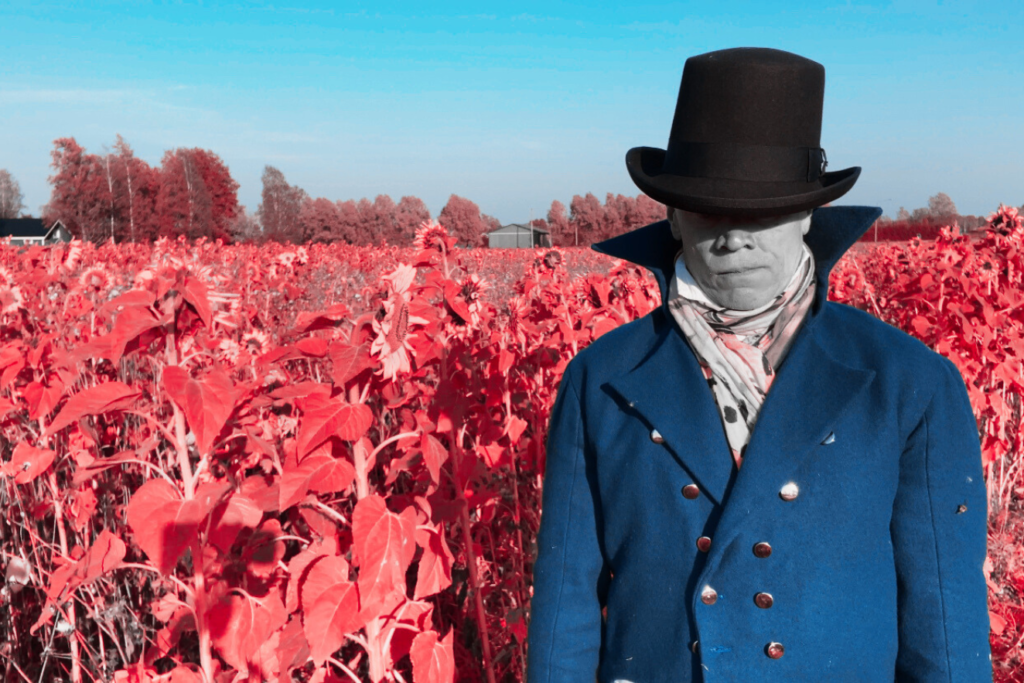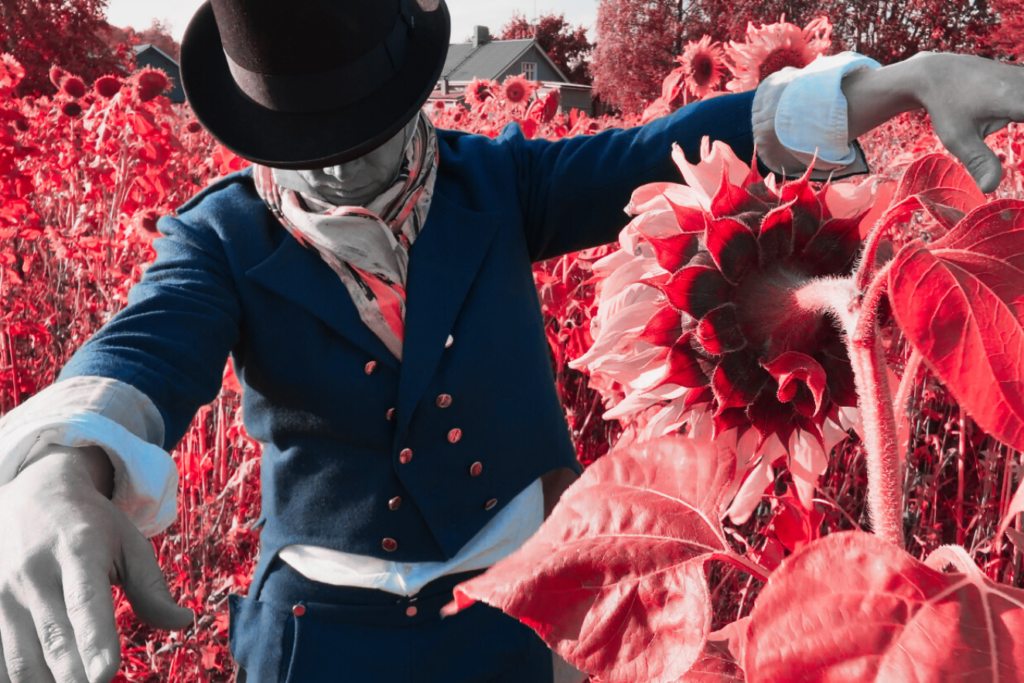In short
“He Who Walks Behind the Rows” is the Poliphilos Halloween song.
You can listen to it here.
The background story is based on the book Children of the Corn by Stephen King. It tells the tale of a group of children who offer adult human sacrifices to a demon in the cornfield for the survival of their community.
My song paints a picture of a similarly dilapidated ghost town on a countryside. While this article is about the facts, the Journey article tells the fictional story of how Poliphilos found the song.
Layering Meaning in Music
Generally I want my songs to be rich with meaning and capable of conveying philosophical ideas. Writing the “Ooh baby yeah yeah” kind of song—while fun and valuable in its own way—just isn’t something I have much to add to.
So, I feel especially satisfied when I can bring together a current event, a personal experience, and references to other art forms, all while touching on a philosophical topic. And with “He Who Walks Behind the Rows”, I was able to do just that. Inspired originally by Stephen King’s “Children of the Corn”, I was thrilled to release it just in time for Halloween. Hopefully, it finds a place on Halloween playlists everywhere!
On a more personal level, as I’ve returned to writing music, I find myself having to sacrifice a lot to produce songs of any meaningful quality. Hours spent alone, away from friends, family, and the larger community, are required to fuel the creative process. And this raises the question: will I end up an outcast, or can I reach a wider audience that resonates with my message?
This, I see, is at heart of the artist’s dilemma.
So many people encourage us to “be who we are” and “chase our dreams,” but there is a price we have to pay for that. Finally, there’s a larger question: “How much should any of us sacrifice today for gaining anything in a world where survival no longer directly depends on tribal protection”? So, in “He Who Walks Behind the Rows”, I reflect this with the line, “That’s our price to pay.”

How I Write Music: Letting It Simmer
Anyway, “He Who Walks Behind the Rows”, like many of my songs, started with the text and this time I found those in King’s book. After repeating them in my mind, a rhythm began to form, which then led to the melody.
This process is completely intuitive, but it demands equal parts work and relaxation. I usually write the first version quickly, then let it rest overnight. It’s amazing how sleep lets new ideas take shape! Walking has also become essential, which is interesting, because I used to think of it as a useless form of exercise. But nowadays I’ll take long walks both in the morning and afternoon. And I come back refreshed and full of new thoughts.
So, my creative recipe is a combination of work, sleep, and walks, allowing the song to “cook” in my mind with each break.
Beautiful but Broken
If I had to capture the sound of “He Who Walks Behind the Rows” in a phrase, it’s that “Beautiful but broken” vibe I’m trying to weave through the entire album, “Player Characters”. Shoutout to Jill Bryson of Strawberry Switchblade for the concept! Another theme I’m exploring across all nine tracks is duality, as expressed in the pre-chorus of this song:
"Fields are golden but the earth is red It must mean someone’s dead. On the road, you see what’s left of them. That’s our price to pay."
Pairing light, airy melodies with dark lyrics really creates something unsettling. The melody is almost like a child’s rhyme, but the tremolo strings underneath add a tension, making it beautiful with an edge of danger. It’s this contrast—between light and dark, beauty and sorrow—that draws me in.
While writing this song, I also thought of Kate Bush’s “Coffee Homeground”, which has a sweet tune hiding a sinister undertone. Pink Floyd’s “Breathing” was another influence, helping me shape a dreamy yet eerie atmosphere. I wanted something beautiful but inevitable, a sound that marches forward no matter the cost.
These, and many more similar you can find on my “Beautiful but broken” Spotify playlist.
The Price of Giving Too Much
Beyond the story of a demon demanding sacrifices, this song became personal.
Over the years, I’ve been heavily involved in a lot—boards, side projects, a full-time job. Eventually, I realized I was sacrificing too much of myself. People, often without intending to, will take as much as you’re willing to give, and one day you find yourself running on empty.
So, about a year ago, I started stepping back from some of those roles.
It wasn’t easy; I’ve always been taught to be responsible. But I’ve realized setting boundaries isn’t just about protecting your time; it’s about protecting your well-being. This idea of self-sacrifice is something I think a lot of us struggle with today. We’re taught that giving is good, but too much can consume us.

Call to Action: Let’s Talk About Sacrifice
I’d love for you to give “He Who Walks Behind the Rows” a listen and see how these themes resonate with you.
Have you ever felt like you’ve given too much of yourself?
If so, reach out on social media (links below) or leave a comment here! Let’s start a conversation about finding balance in a world that often asks for more than we can give!


Leave a Reply to He Who Walks Behind The Rows – Poliphilos Cancel reply